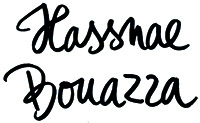
The erosion of the power of the Catholic church had begun with the ninety-five theses the German friar Martin Luther had hammered on October 31, 1517, on the door of All Saints’ Church in Wittenberg. Luther’s Reformation birthed a plethora of radical movements with each its own home-grown theology, based on its own interpretation of the Bible. Everywhere prophets rose who clamoured their own holy truths and who drew their own particular crowds, usually consisting of the scum of the earth: losers, beggars, criminals, pimps, whores who had nowhere else to turn to anyway.
These people fought for their freedom of religion, their freedom of conscience, the freedom to study the Bible on their own, in their own language. The freedom to communicate with God directly, without interference of the priestly class which had legitimized their oppressors and were legitimized by their oppressors.
These were more than just religious wars. This was a struggle to take control of one’s own life, to pursue one’s own happiness and hold one’s own destiny. It could very well be said that in the years after Luther’s rebellious act the very first socialist revolution took place. Or revolutions, in the plural.
Radical Reformation
Luther himself, excommunicated by the Catholic church and living under the protection of the Elector of Saxony, Frederick III, who was himself a Catholic but an admirer of Luther, grew fat at the cost of his protector and was none too happy with the radical reformation in the wake of his resistance against the church and the Roman emperor Charles V. ‘During my absence, Satan has entered my sheepfold, and committed ravages which I cannot repair by writing, but only by my personal presence and living word’, he wrote about the radical reformers who created social unrest and peasant revolts everywhere in Germany.
Luther wrote ‘Against the Murderous, Thieving Hordes of Peasants’, in which he condemned the violence of the peasants as the Devil’s work, at the same time calling on the authorities to put them down like mad dogs.
But Luther, eventually, would live on to write drivel like ‘On the Jews and Their Lies’ and become the founder of not only a radical Reformation he was not able to stop, but also of modern-day anti-Semitism and therefore the Holocaust.
Insignificant folk
The people who continued the struggle he started, the war against the established order, had no use for Luther any more. Among them were two Dutchmen, Jan Matthys and Jan Beukelszoon, who established a New Jerusalem in the German city of Münster, where they expelled all the Catholics, abolished private property and introduced polygamy (mind you, the right for men to have multiple wives, not vice versa).
They believed they lived at the end of time, as predicted in the Bible, and that soon God’s eternal kingdom would be established, but only after the mother of all wars would have been fought on earth, in the here and now.
These Dutchmen had been insignificant folk all their lives. Matthys had been a Catholic baker in Harlem who was converted by the German Anabaptist Melchior Hoffman, who had fled the authorities in his own country and introduced the Reformation in the Netherlands, which had been virtually unscathed by the revolts until then. Among Matthys’ followers was Jan Beukelszoon, better known as John of Leiden, the illegitimate son of a mayor, a tailor’s apprentice turned inn-keeper and satirist, mocking the Catholic church. Riff raff, a rebel, an adventurer who challenged authority.
New Jerusalem
These two men would turn Münster, which was surrounded by the army of the prince-bishop of Münster, whom they had kicked out of the city, into some sort of socialist theocracy, where the inhabitants were promised a paradise of abundance and equality, but which eventually turned into a living hell.
After Matthys’ death John crowned himself king of the New Jerusalem and quickly established a reign of pure terror. Public executions of sinners and deserters were the order of the day. Eventually it all ended in a bloody confrontation against the bishop, in which the troops of John of Leyden didn’t stand a chance, being bakers, bookbinders, blacksmiths, pimps and gamblers instead of trained soldiers.
Bring down the dictator
How similar to those 16th century social uprisings, disguised as religious wars, are the developments in the Arabic world today. How strikingly familiar the rise of the Islamic State to the students of the rise and fall of John of Leiden’s New Jerusalem.
From the very beginning of the Syrian uprising, the Assad regime tried to spin the protests and claimed they were the product of evil, foreign interference. The bitter irony now is that the country is indeed torn between various jihads factions with many foreign fighters who now not only battle Assad, but also each other in their quest for power and a self-proclaimed ‘Islamic state’ or a ‘caliphate’.
The ‘Islamic State of Iraq and the Levant’ or da’esh as it is called in Arabic (da’esh is an acronym for ISIL), Jays al islam, Jubhat al Nusra, Al Qaida, they all moved their fight to Syria and proved a magnet for young people from all over the world who felt attracted to this idea of fighting a worldly dictator and establishing a new state propagating pure Islam.
Monsters
Samar Yazbek, a renowned Syrian writer and journalist, who wrote about the first four months of the Syrian uprising in her acclaimed book Woman under Siege, speaks of da’esh with great loathing: ‘These monsters make Al Qaida look like good guys. They have turned back the clock and thrown Syria back to the Middle Ages’. When I spoke to her in 2013 she was still full of hope that there would be a free Syria, but now she’s not so sure there will ever be a Syria again because of the new colonizers who have thorn her country apart.
Da’esh, led by the self-proclaimed Caliph of Baghdad, proved the most media genic of all terror groups, thanks to its nightmarish propagandistic images of fighters cutting off people’s heads, throwing alleged homosexuals from roofs and re-introducing the stoning of people – and the promise to clean the country of all un-islamic entities.
Young Muslims from Holland, converts or of Moroccan descent, started leaving for Syria. In June 2014 the Dutch secret service, the AIVD, published a report on the phenomenon of the new jihadi’s: and according to the AIVD’s research at that point in time 130 people had gone to Syria.
Good cause
‘In their eyes, they went off fighting the good Islamic fight against the oppressor Assad, for the caliphate and martyr hood. Martyrdom is a recurrent theme among the jihadi’s. They make very clear that they’re prepared to die for the good cause’, says Martijn de Koning, an anthropologist specialised in Muslim youth.
Over the years De Koning has written on identity construction of Moroccan-Dutch youth, Salafi Muslims in the Netherlands, the radicalisation of Muslim youth, and the Dutch Islam debate. He works at the department of Islam and Arab Studies at the Faculty of Religious Studies, Radboud University, Nijmegen and at the Anthropology Department of the University of Amsterdam.
‘And then of course you have the political motives’, says De Koning ‘They believe that something has to happen, has to change in Syria. This feeling was very strong in 2012 and 2013. To be fair, not only Muslims felt this way; this sentiment was broadly felt in Dutch parliament and among publicists. But nothing did happen, the war continued and even when the Assad government used poison gas, there was no intervention. The young people I worked with, were critical of the European societies for not intervening, but at the same time they were critical of past Western interventions. That was a bit contradictory.’
The good fight
Finding out who these people are, who leave their comfortable lives in Holland, is difficult: youngsters are very weary of the media and parents are too afraid to speak out. When they do, they prefer to stay anonymous out of fear for legal or social repercussions. Young people who leave for Syria are seen as radicals, extremists who go off to cut off people’s heads: in February 2014 Khalid K from Al mereposted a photo on his Twitter account posing with the heads of five victims. He later denied that they were his, but the gruesome image of the cut off heads with somebody from the uneventful suburb Almere, could not be erased.
The justice department monitors families who they fear will leave for Syria and prosecutes people who come back. Mohamed Nidalha, a 49 year old construction worker who came to Holland in 1981, has become a public figure in Holland because he’s one of the very few parents who has spoken about his son Reda who has gone to fight the good fight. To protect women and children. So his son says at least.
Dit is het begin van een groot artikel in opdracht van een Amerikaans medium. Het hele stuk staat binnenkort op mijn site.

info[at]aichaqandisha.nl

Een reactie op “Lost Sons”